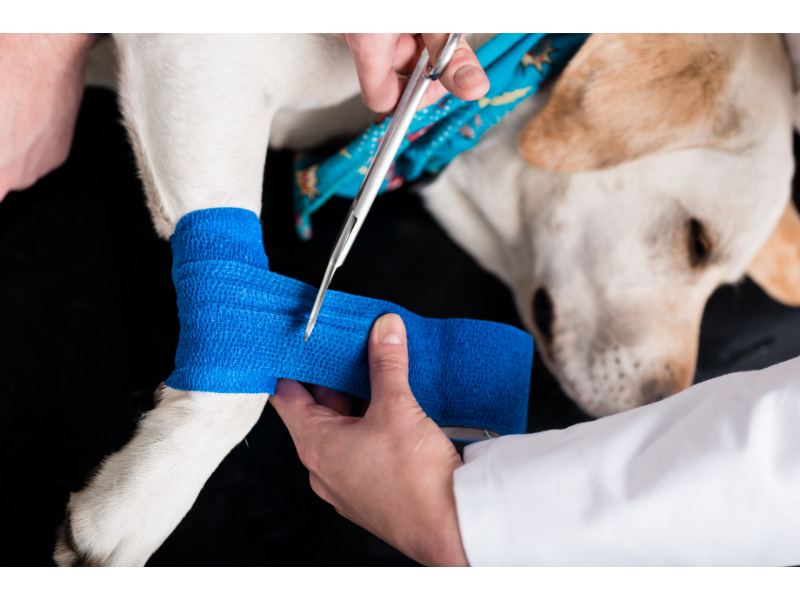
Save 35% with AutoShipUse code SAVE35 (Up to $20 max. Exclusions apply)

SAVE AN EXTRA $5 - $20 OFFUse code PETS in cart (Exclusions apply)

While efforts are made to answer all questions as quickly as possible, if an immediate answer is required or if your pet is in need of urgent or emergency care, contact your pet's veterinarian immediately.

You will receive an answer from Dr. Lindsay and our vet/tech team as soon as possible, usually the same day.
All answers are provided for informational or educational purposes only, and are intended to be a supplement to, and not a substitute for, the expertise and professional judgment of your pet's veterinarian.
It may be necessary to consult your pet's veterinarian regarding the applicability of any opinions or recommendations with respect to your pet's symptoms or medical condition.
Close
An error has occurred, please reload the page and try again.
CloseWhile efforts are made to answer all questions as quickly as possible, if an immediate answer is required or if your pet is in need of urgent or emergency care, contact your pet's veterinarian immediately.
There is no answer related to your question

Cranial cruciate ligament (CCL) tears are one of the leading causes of lameness and orthopedic pain in cats and dogs. This type of injury is most commonly seen in large breed dogs but can happen to pets of all breeds and sizes. Learn how you can identify potential symptoms of a CCL tear, how to prevent this and other soft tissue injuries, and what treatment options are available.
What is the Cranial Cruciate Ligament?
The cranial cruciate ligament is a fibrous piece of connective tissue in your cat or dog’s knee that’s akin to the anterior cruciate ligament (ACL) in humans. The ligament runs diagonally through the center of the knee, connecting the femur, or thigh bone, to the tibia, or shin bone. It provides stability and prevents hyperextension and rotation of the joint, helping to protect surrounding tissues when your pet moves.
Symptoms of CCL Tear in Pets
When your pet sustains trauma to their CCL, it may partially tear or completely rupture. Tears and ruptures can happen when a cat or dog jumps or falls from a significant height, when they make a sharp turn, or when the knee is hit with excessive force.
A torn CCL is no longer able to prevent the top of the tibia from thrusting forward. The knee becomes loose and unstable, and the thrusting motion causes painful friction with movement.
Symptoms of a torn or ruptured CCL include:
Symptoms may be observed immediately after an impact or injury or may develop later. Sometimes a partial tear will not manifest as any noticeable symptoms but can worsen or lead to rupture later on.
Risk Factors for CCL Tears
CCL tears are more common in large breed dogs, including Rottweilers, Great Danes, Retrievers, and Mastiffs. However, they can happen to dogs of any breed or size, as well as cats.
An overweight body composition can put pets at greater risk for joint injuries. Active pets at a healthy weight, on the other hand, will typically have stronger muscles surrounding the joint that provides more stability and flexibility.
Pets that participate in high-impact activities, especially those that involve jumping, repeated motions, and sharp turns, are at greater risk. Pet parents of athletic pets should see a veterinary physiotherapist regularly and ask about warm-ups, stretches, and joint supplements they can use to prevent injury and promote recovery.
Treatment Options for Pets with CCL
Unfortunately, the CCL does not receive enough blood flow to heal itself, and long-term pain relief is only possible with surgical intervention. A partial tear is likely to worsen over time without treatment. A pet with a CCL of one knee has a 40-60% chance of eventually sustaining a similar injury in their other knee.
One of the most popular surgical procedures for CCL in pets is Tibial Plateau Leveling Osteotomy (TPLO), which has a high success rate even for large breed dogs and active pets. The procedure involves removing the damaged portions of the ligament. Then the bones are cut, repositioned, and secured with a bone plate and screws. This procedure flattens the sloped surface at the top of the tibia so it remains stable, no longer thrusting forward when the cat or dog moves.
Other surgical procedures involve using a suture or, for the “tightrope” technique, a medical-grade fishing line to stabilize the knee and replace the function of the CCL without cutting the bone. This type of surgery is more commonly recommended for smaller or sedentary dogs.
The surgeon may recommend either type of surgery depending on the size of the pet, age, their level of activity, cost, and their own preference depending on their surgical skills or area of expertise.
For both pets that are not good candidates for surgery, as well as those recovering from surgery, joint care and pain management are important.
Joint supplements containing omega-3 fatty acids, methylsulfonylmethane (MSM), glucosamine, and chondroitin can help reduce inflammation and protect joint tissue.
Massage, stretches, swimming, acupuncture, NSAIDs, and prescription pain medications are all options to discuss with your veterinarian or veterinary physiotherapist.
 Swipe
Swipe